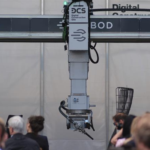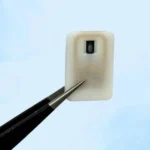A new initiative at the University of Maine is aiming to repurpose old wind turbine blades into 3D printing feedstock. With a grant of $75,000 from the Department of Energy’s Wind Energy Technologies Office’s Wind Turbine Materials Recycling Prize, a team of researchers from the Advanced Structures and Composites Center (ASCC) is leading the charge.
Their project, aptly named “Blades for Large-Format Additive Manufacturing,” intends to tackle the growing issue of wind blade disposal while advancing the possibilities of additive manufacturing.
By repurposing shredded wind turbine blade material as feedstock for 3D printing, the team hopes to achieve not only environmental benefits but also cost savings and design flexibility for the construction industry.
“We are grateful for the Department of Energy’s continued support in our mission to advance wind energy technologies,” said Habib Dagher, executive director of the ASCC.
“With thousands of wind blades destined for landfill disposal, this funding allows us to explore the responsible recycling of these products, to reuse and repurpose them as feedstock materials for 3D printing,”
Through innovative compounding methods, the team seeks to ensure the mechanical integrity of the composite material, paving the way for its use in large-scale additive manufacturing processes. The integration of shredded blade material into precast concrete formwork promises to enhance construction practices, offering a sustainable alternative to traditional methods.
Moreover, this project underscores UMaine ASCC’s commitment to environmental stewardship and technological innovation. With a track record of pioneering projects such as BioHome3D and 3Dirigo, ASCC continues to lead the way in advancing sustainable manufacturing practices.
Come and let us know your thoughts on our Facebook, X, and LinkedIn pages, and don’t forget to sign up for our weekly additive manufacturing newsletter to get all the latest stories delivered right to your inbox.











